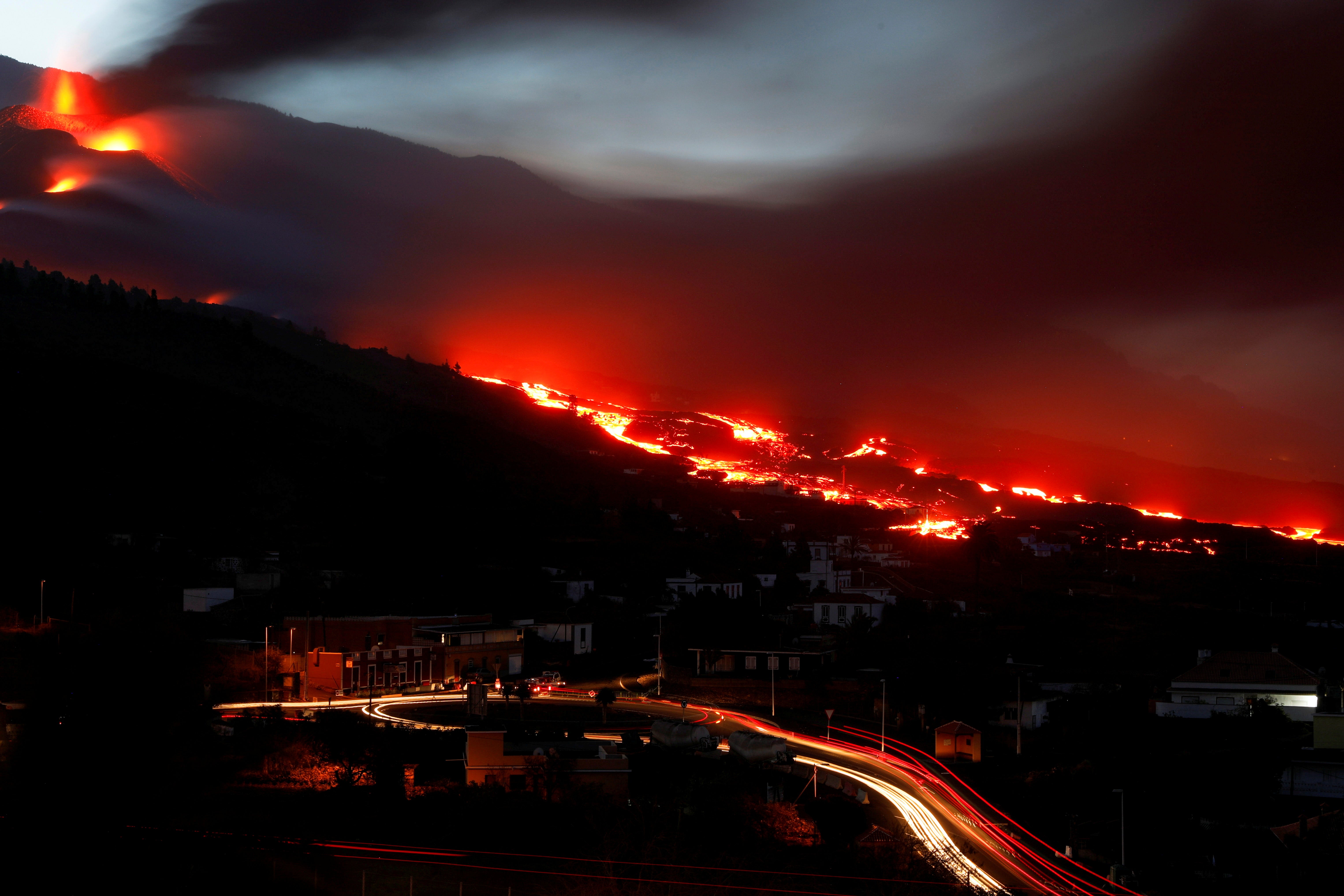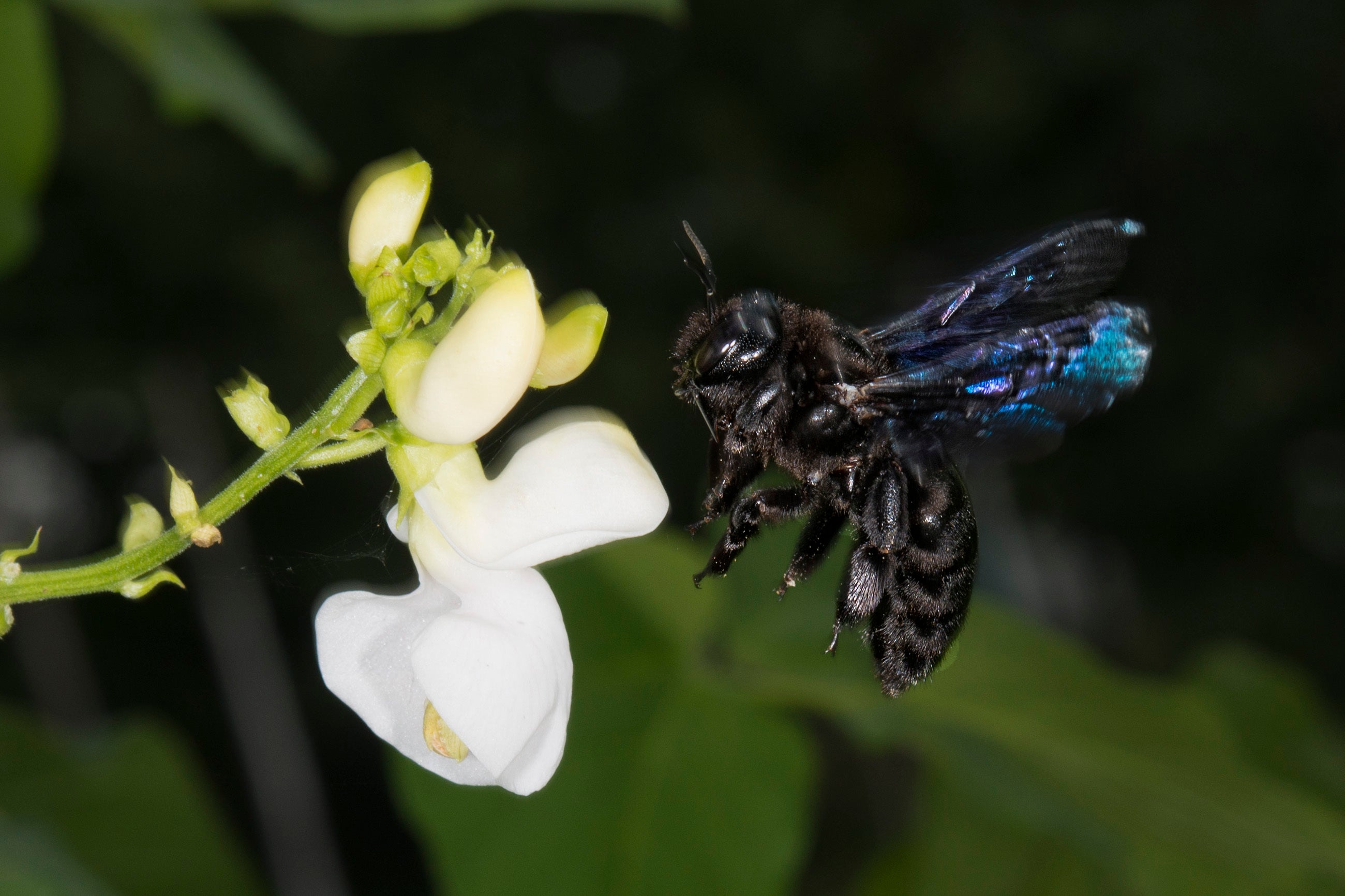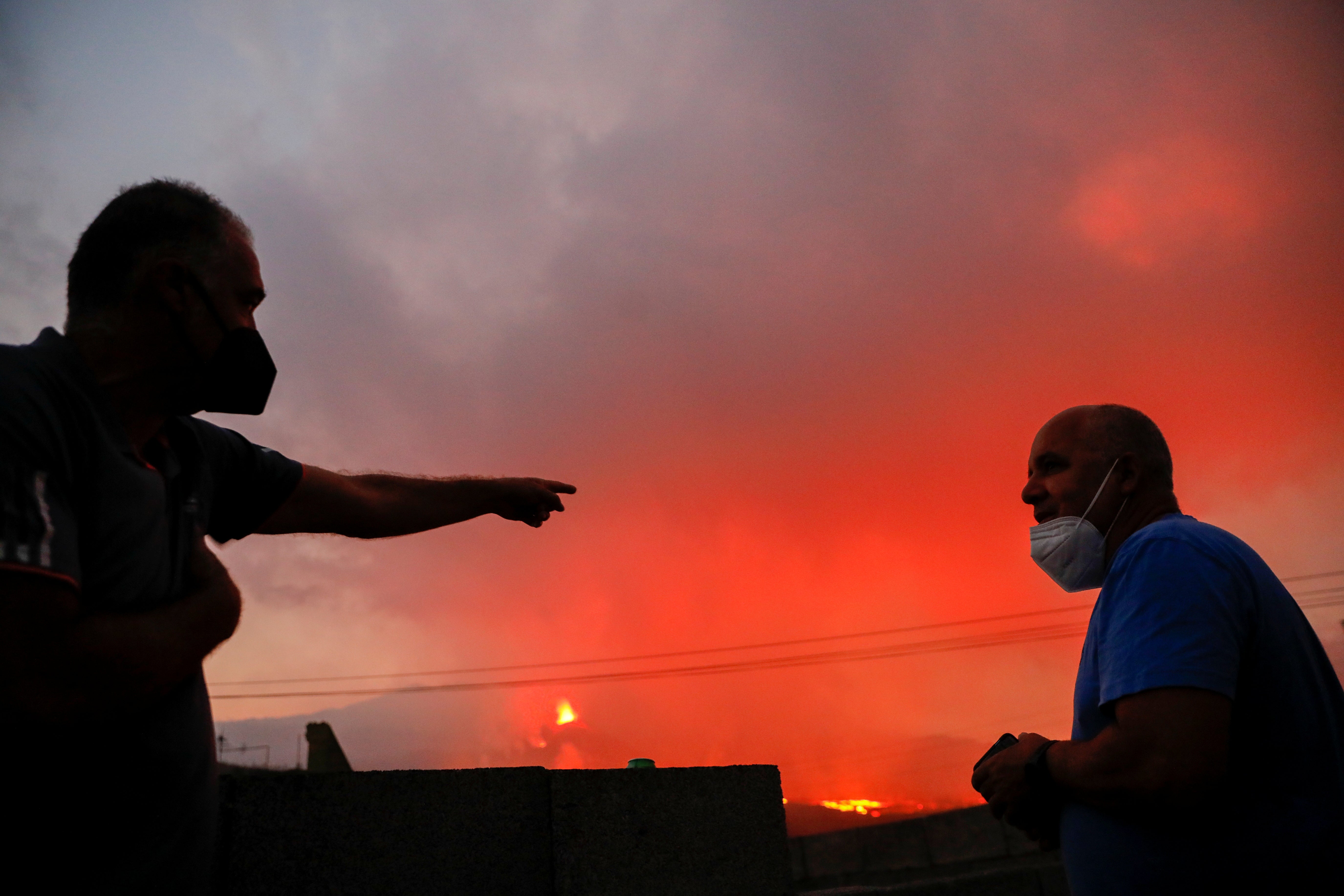Saving their own hives: the ingenious bees surviving the Canary Islands volcano
Despite thousands of people being evacuated after the volcano on the Spanish island of La Palma, black bees have found a way of surviving the blast, reports Graham Keeley in Madrid


Rivers of molten lava have wreaked havoc on the Spanish island of La Palma, destroying buildings and forcing the evacuation of thousands of people and abandonment of pets.
But the humble honey bee has found an ingenious way to preserve its home.
The black bees, which are native to the Canary Islands, are using propolis to protect the access to their hives from the volcanic ash which is covering the island with a thick, sooty blanket.
Propolis is a thick, resin-like material made by bees from the buds of cone-bearing trees which are typical to the island.
The substance is used to fight bacteria, viruses and fungi and has been employed to treat diabetes, cold sores and burns, among other conditions.
Over a month after the Cumbre Vieja eruption started, more than 7,500 people have been evacuated and around 2,185 buildings have been crushed or destroyed.
However, the bees have largely survived unscathed – so far – because they have kept the ash from entering their hives.
“They use this material to guard the entrance to the hive because they are very sensitive to a change of temperature inside,” Francisco Hernández, of the Beekeepers Association in Gran Canaria, one of the other Canary Islands, told The Independent.
“It is a natural protection for them and helps preserve the hive and the larvae and honey inside.”
Bees keep the temperature inside hives nearly the same temperature as human blood, which is 37C (98.6F).
About 100,000 black bees are kept in hives in La Palma and are deliberately situated near avocado farms to help pollinate the plants.
With almost year-round sun on the islands on the Spanish island off the west coast of Africa, avocados are an important part of the local economy and the fruit is exported to mainland Spain. The honey is only sold locally.
When they are not threatened by a volcanic eruption, the properties of propolis help preserve bees from other predators.
“To give you an idea, when a mouse enters a hive, the bees logically sting and kill it,” Elias Gonzalez, of the Beekeepers Association of La Palma told Spanish newspaper El Mundo.
“But since they are not able to get the dead body of the mouse out of there, because they cannot transport it, they smear it with propolis, which is a substance that they make with nectar and resin from the trees, which is an antibiotic and antifungal. The mouse’s corpse gets mummified.”

Variations of the black bee are also found in Britain, particularly in Scotland.
However, for the past 20 years, no other type of bee has been permitted in the Canary Islands to prevent types mixing.
As the ash has covered the plants from which the bees extract nectar and pollen, beekeepers have been forced to put out sugar solution and water to keep the insects nourished.
With molten magma edging closer to villages on the island, beekeepers have been given special permission by the emergency services to enter into the security zone to save hives.
“I had to get a hive which was about 50 metres away from the lava,” said Mr González.
However, he fears for the future of the bees when the eruption finally ends.
“Many plants and flowers, of which we have about 400 native varieties that feed the black bee, will be buried and will be inaccessible,” he said.
Experts from the Canary Islands Volcanology Institute have said the eruption could go on for three months.
A mysterious group calling itself the A Team claimed they had saved five dogs on Thursday, which were stranded near lava flows since last week near the village of Todoque.
The group, who are suspected to be neighbours, told a local journalist: “We can confirm that the dogs are OK. We found five. Another one died.
“The rescue is real. We have come inside the exclusion zone, which is real. But it risks incurring a fine so we do not want to reveal our identities.”
The dogs belonged to a local hunter who was forced to abandon them when neighbours were ordered to evacuate the area.
Emergency services helped evacuate about 500 people from their homes from the village of Tazacorte on Thursday as the lava edged closer.
“There is already a certain degree of despondency and desperation, waiting for the volcano to subside,” Juan Miguel Rodriguez, mayor of Tazacorte, told Spanish television channel RTVE.

The eruption has not only affected most of the 85,000 population of La Palma but also ruined the livelihoods and destroyed the homes of many living in the western side of the island.
Molten rock has covered more than 866 hectares (2,100 acres), seriously affecting the banana crop which accounts for about 30 per cent of the GDP of the island.
The economy of La Palma, a largely agricultural island, is based on banana plantations with some tourism.
Unlike Gran Canaria, Tenerife or Lanzarote, it does not attract huge numbers of international tourists in normal times.
The Spanish government has pledged millions of euros to help rebuild damaged infrastructure and homes.
Join our commenting forum
Join thought-provoking conversations, follow other Independent readers and see their replies
Comments



Bookmark popover
Removed from bookmarks